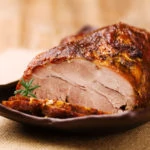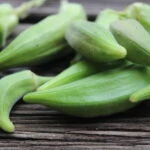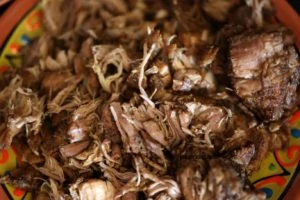When you’re baking bread at home, there’s the fear factor that makes many people afraid to attempt it or give up in the event of a failure.
To us, it’s an absolute injustice. Since baking bread from scratch can be a tremendously satisfying and enjoyable process. Once you master the art of a few basic methods, you’ll bake bread like an expert.
This article will show you how to mix bread dough without a mixer. Kneading is crucial in making a gorgeous bread loaf. However, making the wrong kneading decisions could cause a mess in your baking!
How to Mix Bread Dough Without a Mixer
Note: This recipe for how to mix bread dough without a stand mixer, and the process is for a workhorse loaf.
Mixing the Workhorse Loaf
Here’s a word that gets used often: Mixing. In most cases, mixing is just what it implies. We will combine flour, salt, water, and yeast and mix these ingredients to create dough. On the most basic level, mixing is all about dough structure and is the first step in any baking endeavor.
Mixing bread dough isn’t easy without a stand mixer. It has many quirks and kinks, and there are significant decisions regarding how to go about the process to ensure you are kneading dough correctly. These choices will impact how the dough is baked and can affect the final homemade bread product.
We’ll be diving into some of the most frequently asked queries about kneading dough. What’s gluten? And how frightened should you feel? What does kneading dough actually do?
Before diving deep into the details of making and kneading dough, we’ll briefly review what we’ll be working on today. Making a bread of any kind, such as this recipe, can be broken down into five easy steps.
- Step 1: Begin by preparing the ingredients
- Step 2: Measure the ingredients
- Step 3: Mix your water and flour
- Step 4: Mix in your yeast and salt to make your gluten – this is the kneading process
- Step 5: Move the dough to the proofing container
Step 1: Choose Ingredients
This sounds simple enough. It is often. However, it’s equally vital! This is the bread-baking stage in which we make our biggest decisions regarding what type of bread we’ll bake. Whether it’s the grocery shopping trip or going through our pantry, it’s always the first step and can considerably influence how we proceed.
Today, we’re lucky because we’ve decided to keep it simple. This simple yet crusty white bread recipe is inspired by a traditional French white bread similar to baguettes.
For this recipe, all you need is all-purpose white flour, potable water, salt, and some yeast that you can buy from a store.
You may be thinking – What type of yeast do I select? Should I use fresh, instant, or active dry yeast? The final result will be the same. The taste is pretty similar. You need to grab the one you can easily locate.
Step 2: Scale Your Ingredients
Make use of a scale when baking. Cups and spoons aren’t always enough. Based on how tightly flour and different ingredients are packed, volume measurements could vary as much as 50 percent. A scale will ensure that your dough is made the same way every time.
Be sure to weigh all the ingredients with care and in separate containers. Be aware of what type of yeast is used and the amount you need. Familiarize yourself with the weigh scale’s tare (zeroing) function. It allows you to disregard the weight of your measuring containers, which makes it much easier to weigh your ingredients more precisely.
Step 3: Incorporate Your Flour, Water, and Autolyse
Once we’ve gathered and taken measurements of all of your ingredients, it’s time to begin mixing.
When mixing the dough with your hands, be prepared to get a little messy. Start by mixing the flour in a mixing bowl with water and then, using a scraper, scrape the flour into the water, paying close attention to the sides and the bottom of the bowl.
As the dough comes together, make sure you insert your hands into the mix. When mixing with your hands, start at the top of the bowl, and then fold the dough over itself using a spatula. Use the other side of your hand to incorporate all the dry ingredients.
When the flour and water have been completely incorporated, and there aren’t any dry places, stop and let it sit. The dough should appear sloppy and unformed. This is also known as “the shaggy mass” stage.
At this moment, you may think, Oh no! This wet dough is too wet! But it isn’t. We assure you. Hearth bread is made with an extremely wet dough.
Cover the wet dough and step away from it for half an hour. Set a timer if you like. The resting time is known as an autolyse. It lets the flour be more hydrated, eventually giving us a clearer picture of the amount we should add to the final mixture.
Following the autolyse process, your dough may appear to be looser than before. It’s the bread’s way to tell you that the gluten is beginning to relax and organize itself. This creates an elastic dough capable of holding a lot of gas.
Step 4: Incorporate Salt and Yeast, and Develop Gluten
It’s time to add the yeast and salt. Why can’t we include them in the course of our autolyse? Good question!
While salt can strengthen the gluten network, it’s also highly thirsty for water. If we were to add sodium to the autolyse process, it could compete with our proteins and starches to get water, which would cause them to slow down the process of hydrating. Although this isn’t an issue, we’ve agreed to complete an entire five hours of work, but why make it more difficult for ourselves?
In the case of the yeast itself, its role is to help ferment our flour, which causes it to expand and gain taste — on a chemical level, mixing and autolysing aren’t about taste. It’s about the structure. If we were to place yeast into our autolyse, it’d begin exhaling gas.
If we began the kneading step, we’d find ourselves pounding the gas out again. In other words, the yeast does not need to be doing anything in the autolyze stage.
When hand mixing, do yourself a favor and grab your oil-sprayed container – the one where you will do the dough proofing.
Start by spreading your salt and yeast mixture evenly on top of the homemade bread dough. Utilizing a dough spatula and your fingers, begin to fold the dough inwards to blend, making one-quarter dough turn for each fold. While doing this, you’ll notice the dough becoming firmer, and what was a mess of loose dough will appear and feel neat.
Continue to work the dough with your hands until there aren’t any yeast or salt granules remaining. If you’ve used active dry yeast and are mixing in the last bit of water, ensure that the water is completely in the dough and that there isn’t any residual water floating between the edges and the folds.
If the dough is still loose, don’t fret. We can always incorporate an additional fold.
With the dough spatula, put your batter in the bowl, scraping as much from your fingers as you possibly can.
Step 5: Cover Your Dough, It’s Rising Time
Cover the bowl in plastic wrap. This is the time for proofing. Meanwhile, get your kitchen spotless. And there you have it. You were just given the steps on how to mix bread dough without a stand mixer or a dough hook. While it may be more time-consuming to do so manually, you will have the added benefit of knowing that you did everything by hand, start to finish.











